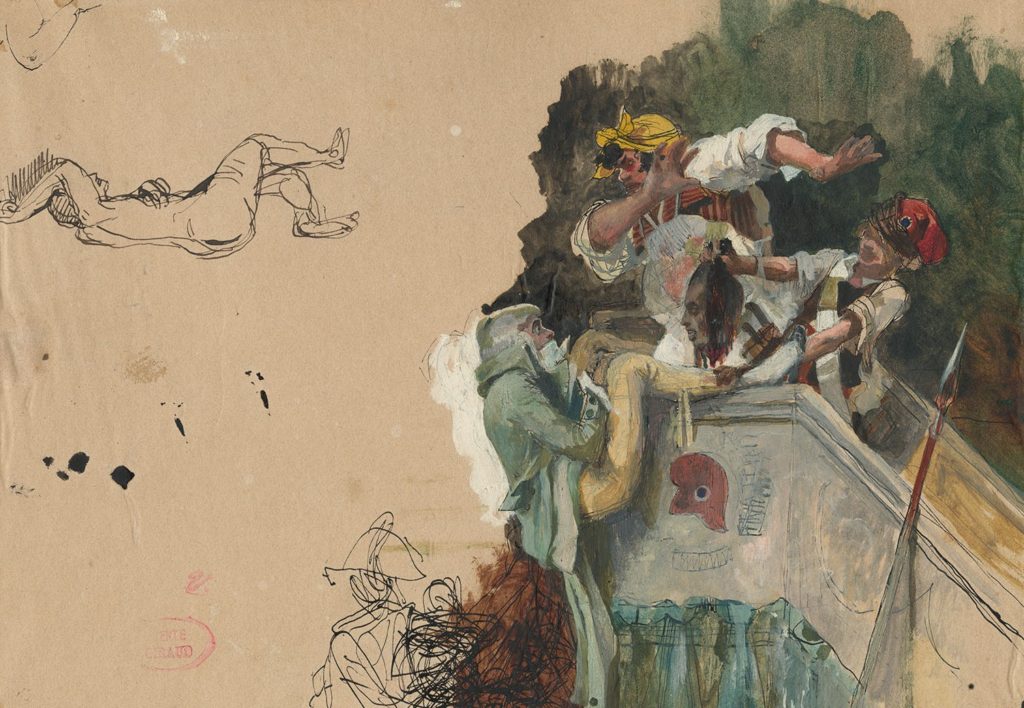On May the 20th 1795, the people of Paris, famished by a strict policy of food supply and the death of Robespierre, took the arms against his leaders. In defending the entrance of the Convention Nationale, the deputy Jean-Bertrand Féraud was assassinated, then beheaded by the crowd, and his head stuck on a pike as a trophy. The insurgents obliged the Convention’s president, François-Antoine de Boissy d’Anglas, to greet the head, and this appeased their furry r. It is this macabre event of the First Republic that chose the painter Victor Giraud to depict, like did some of his predecessors. The theme indeed became a classic of French academic painting, and it was even the subject of a competition in 1830 aimed at decorating the walls of the Chambre des Députés under King Louis-Philippe.
Despite exhibiting academic-orientated works at the Salon – Victor was, indeed, the student of Eugène Giraud, his father, before entering the Ecole des Beaux-Arts under the supervision of François-Edouard Picot –, the present study is filled with modernity and consists of an exception due to the scene’s iconography. Here, the president greeting the head is not represented as an impassive hero overlooking the unruly crowd, like in François Guizot’s work , but rather as a powerless leader lacking balance and control in front of the rioters’ determination. The equilibrium is inverted: the mob is taking over.
Through this focus on the action, Giraud displayed an idealised vision of one of the bloodiest episodes of the French Revolution. He did it at the dawn of a period characterised by the downfall of Napoléon III’s Empire, by popular risings during the Commune de Paris, events that caused the artist’s death. Enrolled in the National Guard during the Siège de Paris, he went through life-treating ventures and died just before the Franco-Prussian armistice, in February 1871.
The works of Victor Giraud are rare but one can guess that he made numerous compositions before his early death. Eugène Giraud survived his son for ten years, and it was only at his own death that their respective workshops were dispersed. Their works were marked a small E for the father and a V for the son.







